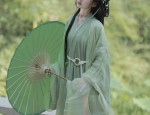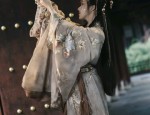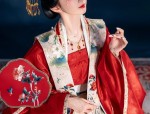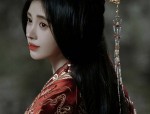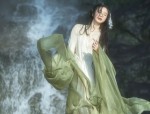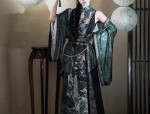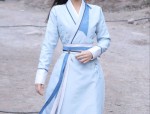Baby Clothes:The Cultural Blend of Hanfu for a Hundred-Day Celebration
For hundreds of years, Hanfu has been a symbol of Chinese traditional culture and artistry, embodying the essence of elegance and dignity. As a part of this rich heritage, the celebration of a baby's hundred days is an occasion that is marked with joy and warmth, often incorporating Hanfu attire as a significant aspect of the celebration.
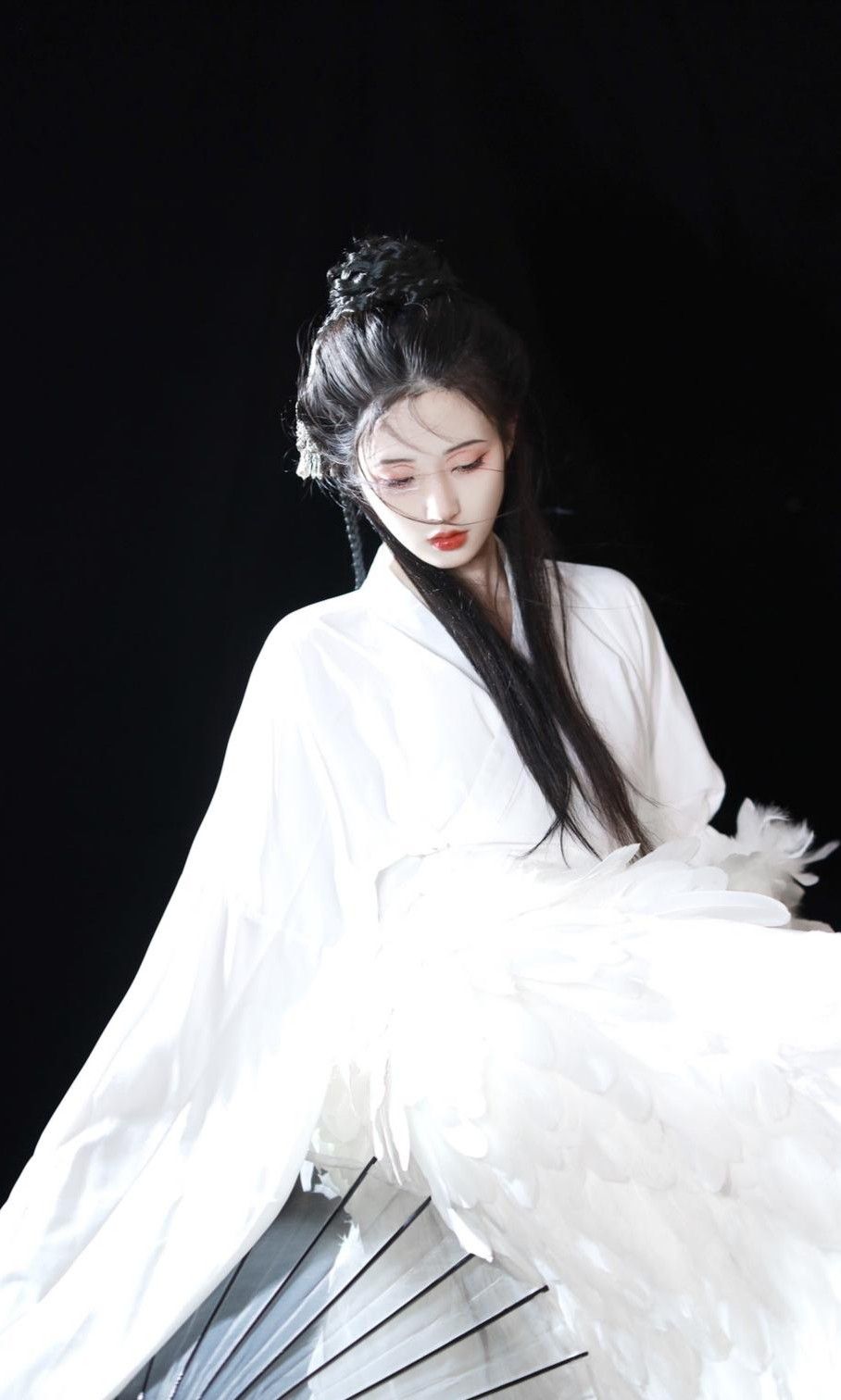
The hundred-day baby clothes in Hanfu style are not just simple pieces of clothing; they are a representation of cultural continuity and family pride. These clothes are designed with intricate patterns and vibrant colors, embodying the essence of traditional Chinese aesthetics. The use of silk, cotton, and other natural materials ensures comfort for the baby while maintaining the elegance of the traditional design.
The history of Hanfu dates back to the Han dynasty (206 B.C. to A.D. 8), when it was considered the standard attire for court ceremonies and other formal occasions. Over time, it has evolved to include different styles and designs that reflect the rich cultural heritage of China. The hundred-day baby clothes in Hanfu style often feature vibrant colors like red, yellow, and green, which symbolize prosperity and good luck. The intricate patterns often include auspicious symbols like flowers, fish, and birds, which are believed to bring good fortune to the baby.
The design of these clothes is often influenced by traditional Chinese culture and philosophy. The use of specific colors and patterns is not just for aesthetics but also has a deeper cultural significance. For instance, the color red is often associated with luck and happiness, while yellow is considered a symbol of nobility and dignity. The patterns like flowers and birds symbolize harmony and balance, reflecting the core principles of traditional Chinese philosophy.
Moreover, the hundred-day baby clothes in Hanfu style are often customized to fit the baby's comfort and size. The use of natural materials like silk and cotton ensures that the baby remains comfortable even during long wear. The design and patterns are often passed down through generations, making these clothes a family heirloom that carries a legacy of love and care.
In addition to their cultural significance, these clothes also provide an opportunity for parents to introduce their children to the rich cultural heritage of China. By wearing these traditional clothes, parents can instill in their children a sense of pride in their cultural identity and heritage. It also helps them appreciate and understand their cultural roots, which is essential for their personal growth and development.
The celebration of a baby's hundred days is an occasion that is filled with joy and happiness, and what better way to celebrate than by dressing them in traditional Hanfu clothes? These clothes not only look beautiful but also carry a deep cultural significance that is essential for maintaining the continuity of Chinese culture.
In conclusion, the hundred-day baby clothes in Hanfu style are not just pieces of clothing; they are a representation of a rich cultural heritage that dates back hundreds of years. These clothes embody the essence of elegance, dignity, and luck, making them a perfect choice for celebrating a baby's hundred days. By dressing their babies in these traditional clothes, parents are not just ensuring their comfort but also instilling in them a sense of pride in their cultural identity and heritage.

 Previous Post
Previous Post

